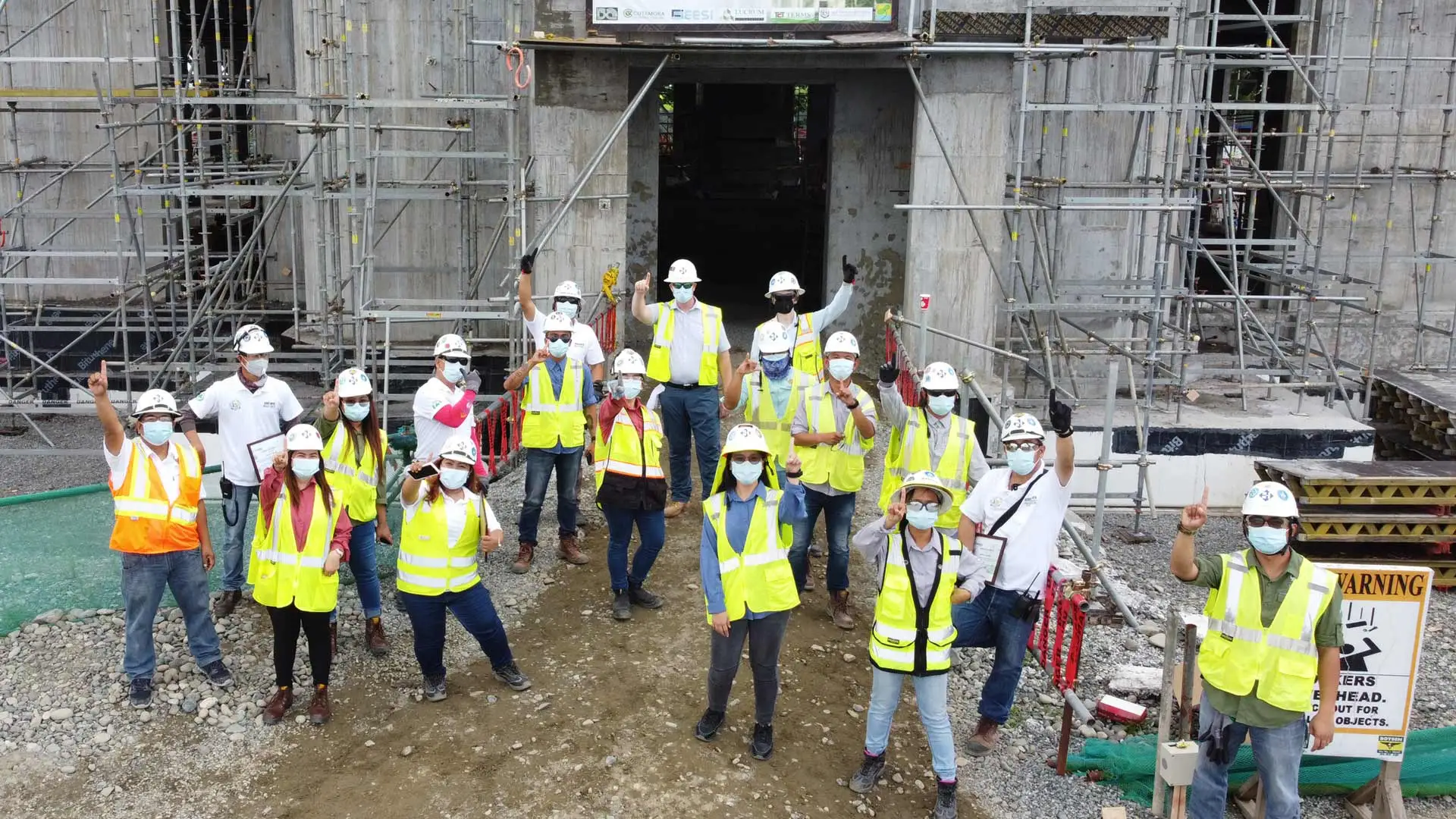In the dynamic world of Philippine construction, one name consistently rises to the top: Makati Development Corporation (MDC). As the biggest construction company in the Philippines, MDC’s impact extends far beyond towering skyscrapers and impressive infrastructure. Their commitment to innovation, sustainability, and pushing the boundaries of what’s possible has solidified their position as an industry leader, shaping not just the country’s skyline but its very future.
The Biggest Construction Company in the Philippines
MDC’s reputation precedes them. They are the powerhouse behind iconic skyscrapers that define the Philippine skyline, intricate transportation systems that keep the nation moving, and powerful energy plants fueling the country’s growth. From sleek office buildings and modern apartment complexes to massive bridges and vital infrastructure, MDC’s portfolio reads like a blueprint for progress.
But their success is about more than just size and scale. MDC is renowned for its financial strength, holding a significant market share and consistently delivering projects of exceptional quality. Their commitment to sustainable building practices and diversity within their ranks demonstrates a forward-thinking approach, building not just for today but for a brighter, more sustainable tomorrow.
Who are the Top Construction Companies in the Philippines?
The Philippine construction industry is a hotbed of activity, with numerous companies contributing to the nation’s rapid development. However, a few key players stand out, consistently raising the bar for excellence and innovation:
- Makati Development Corporation (MDC): As the undisputed leader, MDC sets the benchmark for the industry. Their vast portfolio, financial strength, and commitment to sustainable practices solidify their position at the top.
- Megawide Construction Corporation: Renowned for taking on ambitious infrastructure projects that seem almost impossible, Megawide has earned a reputation for tackling challenges head-on.
- EEI Corporation: With a particular expertise in energy-related construction, especially renewable energy sources, EEI Corporation is playing a vital role in the Philippines’ transition to a more sustainable future.
The Philippine construction sector as a whole deserves recognition for its resilience and adaptability. Companies have consistently navigated economic fluctuations and changing market conditions, embracing innovation and finding creative solutions to keep projects moving forward.
What Factors Determine the “Biggest” Construction Company?
Determining the “biggest” construction company isn’t as simple as looking at the size of their workforce or the height of their buildings. It’s a multi-faceted assessment that considers several key factors:
Financial Strength: Market capitalization is a key indicator, reflecting investor confidence in a company’s future potential and overall financial stability.
Project Portfolio: A track record of successfully completed projects, especially large-scale, complex endeavors, showcases technical capabilities, engineering expertise, and the ability to deliver on promises.
Technological Advancement: Embracing innovation is essential. The most successful companies are those that utilize cutting-edge technologies like 3D modeling (BIM), automation tools, and sustainable building practices to improve efficiency, reduce costs, and minimize environmental impact.
Global Reach: Expanding operations internationally, tapping into new markets, and diversifying their project portfolio demonstrates a company’s ability to compete on a global scale.
Social Responsibility: In today’s world, consumers and investors value companies that prioritize ethical practices. Construction firms that embrace green building initiatives, prioritize energy efficiency, and give back to the community are gaining a competitive edge.
The Impact of the Construction Industry on the Philippine Economy
The construction industry is a cornerstone of the Philippine economy, playing a vital role in driving economic growth, creating jobs, and building the infrastructure necessary for a thriving nation.
Job Creation: The industry provides employment for millions of Filipinos, from architects and engineers to skilled laborers and construction workers, stimulating local economies and supporting families.
Infrastructure Development: New roads, bridges, airports, and transportation systems improve connectivity, attract investment, and facilitate trade, laying the foundation for sustained economic growth.
Technological Advancement: The construction industry’s embrace of innovations like BIM, automation, and sustainable building practices is positioning the Philippines as a regional leader in construction technology.
Sustainability Focus: The increasing emphasis on green building practices is not only good for the environment but also enhances the country’s global competitiveness, attracting investors and businesses seeking environmentally responsible partners.
Challenges and Opportunities: The Philippine construction industry faces challenges such as rising material costs, a shortage of skilled labor, and the need for continued infrastructure investment. However, these challenges also present opportunities for innovation, collaboration, and sustainable growth.
**To learn more about the sound reduction spectrum of timber frame construction, click here.
For a comprehensive report on post-build additions, see this page.
Discover how you can create strong and durable joints without the need for a post by visiting this page.
- Embossed Backsplash Tile Kitchen: Add Texture And Style - December 22, 2025
- Ceramic Tile Backsplash Ideas for Your Kitchen Remodel - December 21, 2025
- Contemporary Kitchen Backsplash Ideas for a Stylish Home - December 20, 2025










